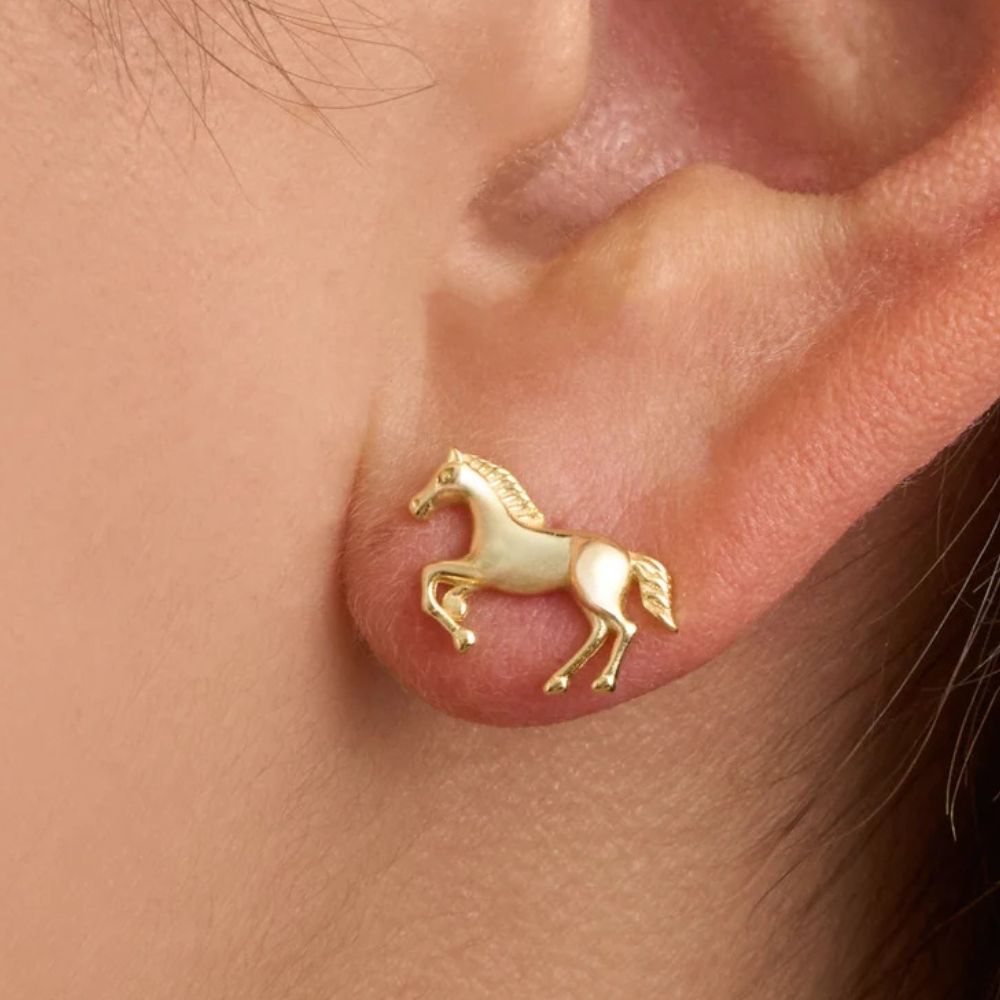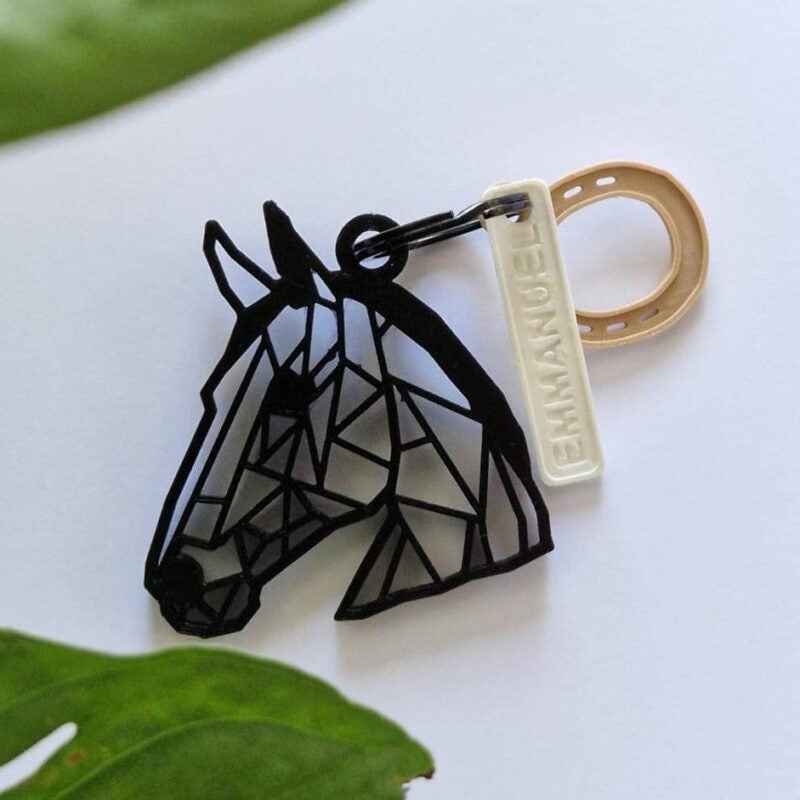
Why Do Horses Lick Salt: Essential Nutrition Facts Every Horse Owner Should Know
Have you ever watched your horse eagerly approach a salt lick and wondered what drives this behavior? Understanding why horses lick salt is fundamental to proper equine care and nutrition. Horses have an instinctive need for sodium that goes far beyond simple preference – it's a biological necessity that affects everything from muscle function to hydration levels.
Salt requirements for horses are more complex than many owners realize. These magnificent animals lose significant amounts of sodium through sweat, especially during exercise or hot weather. Unlike humans, horses can't simply reach for a sports drink to replenish their electrolytes for horses. Instead, they rely on their natural instincts and the salt sources we provide to maintain proper electrolyte balance.
This comprehensive guide will explore the fascinating science behind equine salt supplement needs, helping you understand when, how, and why to provide salt to your beloved horse. From recognizing signs of salt deficiency to choosing between different types of salt for horses, we'll cover everything you need to ensure your horse's optimal health and well-being.
The Biological Need - Understanding Horse Salt Requirements
How Horse Physiology Demands Sodium
Horse nutrition facts reveal that sodium is one of the most critical minerals in equine diets. Adult horses typically require 25-40 grams of salt daily, though this can increase dramatically based on activity level and environmental conditions. During summer months in 2023, veterinary studies showed that working horses can lose up to 200 grams of salt through horse sweat and salt loss during intense exercise sessions.
The equine body uses sodium for numerous vital functions. Sodium chloride for horses plays a crucial role in nerve transmission, muscle contraction, and maintaining proper fluid balance. Think of sodium as the conductor of your horse's internal orchestra – without adequate levels, the entire system falls out of harmony.
Horse metabolism relies heavily on sodium to transport nutrients across cell membranes. When horses experience sodium deficiency in horses, their bodies begin to break down muscle tissue to access stored minerals, leading to weakness and poor performance. This biological imperative explains why horses will travel great distances to reach natural salt deposits in the wild.
The Sweat Factor and Exercise Impact
Understanding horse sweat and salt loss is essential for any horse owner. Unlike human sweat, which contains relatively low sodium concentrations, horse sweat is incredibly salty. A study published in the Journal of Equine Veterinary Science in 2024 found that horses lose approximately 3-4 grams of sodium per liter of sweat produced.
During a typical one-hour training session, an average 1,000-pound horse can produce 5-10 liters of sweat, resulting in salt consumption needs of 15-40 additional grams beyond their baseline requirements. This dramatic loss explains why horse craving salt becomes most apparent after exercise or during hot weather.
"The relationship between exercise intensity and sodium requirements in horses is logarithmic rather than linear," explains Dr. Sarah Mitchell, an equine nutritionist at Kentucky State University. "A horse working at moderate intensity may need twice the baseline salt, while one in intense training might require four times the normal amount."
Natural Instincts - Why Horses Seek Salt in the Wild
Evolutionary Adaptations and Salt-Seeking Behavior
Natural horse behavior includes an innate ability to detect and seek out sodium sources. Wild horses have developed sophisticated mechanisms to locate salt deposits, often traveling dozens of miles to reach natural rock salt for horses formations. This behavior, refined over millions of years of evolution, demonstrates how critical sodium is to equine survival.
The horse's sense of taste is specifically adapted to detect salt at extremely low concentrations. Their taste buds can identify sodium levels as low as 0.01%, making them natural sodium detectors. This sensitivity explains why horses can become fixated on horse salt lick blocks and why they'll persistently seek out salty surfaces, including human skin after exercise.
Understanding horse behavior reveals that salt-seeking intensifies during certain periods:
-
Spring and early summer: When grass is lush but low in sodium
-
After rainfall: When natural salt deposits are washed away
-
During breeding season: When mares have increased metabolic demands
-
Recovery periods: Following illness or stress when mineral reserves are depleted
Environmental Factors Affecting Salt Needs
Geographic location significantly impacts equine dietary needs for sodium. Horses living in coastal areas may have access to salt-rich vegetation, while those in inland regions often experience mineral deficiency symptoms without proper supplementation. Areas with naturally soft water require more attention to salt and water intake balance.
Climate plays an equally important role. Hot, humid conditions increase horse electrolyte balance demands exponentially. A 2024 study from the University of Florida showed that horses in humid climates require 60% more salt than those in dry conditions, even at identical temperatures.
Seasonal changes also affect salt requirements for horses. During winter months, when horses are less active and sweating minimally, their needs decrease to baseline levels. However, spring brings increased activity and the need for careful monitoring of nutritional supplements for horses intake.
Health Implications - Signs of Salt Deficiency and Excess
Recognizing Salt Deficiency Warning Signs
Signs of salt deficiency in horses can be subtle initially but become increasingly serious if left untreated. Early indicators include decreased performance, unusual fatigue during normal activities, and increased interest in salty objects or surfaces. Horses may begin licking walls, fences, or even humans more frequently than usual.
Physical symptoms of sodium deficiency in horses progress predictably:
Early Stage (Days 1-7):
-
Reduced appetite for regular feed
-
Increased water consumption initially, then decreased
-
Mild lethargy during exercise
-
Unusual licking behaviors
Moderate Stage (Days 8-14):
-
Muscle cramps or stiffness
-
Poor coat quality
-
Decreased stamina
-
Irregular sweating patterns
Severe Stage (Days 15+):
-
Serious muscle weakness
-
Coordination problems
-
Heat exhaustion risk
-
Potential kidney dysfunction
The Importance of Proper Salt Balance
Maintaining optimal horse electrolyte balance requires understanding that too much salt can be as problematic as too little. Excess sodium intake can lead to increased water consumption, frequent urination, and stress on the kidneys. However, salt toxicity in horses is extremely rare when free-choice salt access is provided, as horses naturally regulate their intake.
Health benefits of salt for horses extend beyond basic mineral requirements. Adequate sodium levels support:
-
Proper muscle function and salt and muscle function coordination
-
Optimal horse digestive health through enzyme activation
-
Enhanced nutrient absorption in the intestinal tract
-
Improved preventing dehydration mechanisms
-
Better salt intake and hydration balance
"I always tell my clients that salt is like insurance for their horses," notes Dr. James Rodriguez, a veterinarian with 25 years of equine practice. "You might not see immediate benefits, but the long-term health implications of proper sodium management are enormous."
Practical Salt Management - Types and Application Methods
Choosing the Right Salt Type for Your Horse
Types of salt for horses vary significantly in composition, delivery method, and palatability. Understanding these differences helps horse owners make informed decisions about equine salt supplement options:
Block Salt Options:
-
Horse mineral block: Compressed salt with added minerals, lasting 2-4 weeks for average horses
-
Rock salt for horses: Natural, unprocessed salt blocks, very hard and long-lasting
-
Iodized salt for horses: Enhanced with iodine for thyroid support, especially important in iodine-deficient regions
Loose Salt Alternatives:
-
Loose salt vs. block salt comparison shows loose salt provides faster intake but requires weatherproof containers
-
Plain white salt: Pure sodium chloride, most economical option
-
Mineral-enriched loose salt: Contains additional trace minerals beyond sodium
The choice between formats depends on horse preferences, management style, and environmental conditions. Some horses prefer the convenience of licking blocks, while others consume loose salt more readily.
Implementation and Management Strategies
Providing salt to horses requires strategic placement and consistent monitoring. Position horse salt lick blocks in easily accessible locations, protected from direct rainfall but not completely sheltered. Horses should be able to access salt throughout the day and night.
Free-choice salt access represents the gold standard for horse care tips regarding sodium supplementation. This approach allows horses to self-regulate their intake based on individual needs, activity levels, and environmental conditions. Research consistently shows that horses provided free-choice salt rarely over-consume.
Best Practices for Salt Management:
-
Check and refill salt sources weekly
-
Monitor consumption patterns to identify health changes
-
Provide fresh water constantly when increasing salt availability
-
Adjust salt in horse feed based on seasonal needs
-
Consult veterinary advice on horse salt for performance horses
How much salt does a horse need varies by individual, but monitoring consumption helps identify optimal levels. Average horses consume 1-2 ounces daily under normal conditions, increasing to 4-6 ounces during heavy work or hot weather.
Frequently Asked Questions About Horse Salt Requirements
Why do horses lick salt blocks so much? Horses lick salt blocks because their bodies have an innate ability to detect and respond to sodium deficiency in horses. The licking behavior intensifies when horses lose salt through horse sweat and salt loss or when their regular diet lacks adequate sodium. This is a normal, healthy behavior that indicates your horse is meeting their salt requirements for horses.
How much salt should I give my horse daily? How much salt does a horse need depends on several factors including size, activity level, and climate. The general recommendation is 25-40 grams (approximately 1-1.5 ounces) daily for an average 1,000-pound horse at rest. Working horses or those in hot climates may need 2-4 times this amount. Free-choice salt access allows horses to self-regulate their intake naturally.
What's better: loose salt or salt blocks? The loose salt vs. block salt debate depends on your horse's preferences and management situation. Loose salt provides faster access and higher consumption rates, making it ideal for horses with high sodium needs. Salt blocks last longer and are more convenient but may limit intake for horses that need higher amounts. Many owners find success offering both options simultaneously.
Can horses get too much salt? Salt toxicity in horses is extremely rare when providing salt to horses through free-choice methods. Horses have natural regulatory mechanisms that prevent overconsumption. However, force-feeding salt or adding excessive amounts to feed can cause problems. Signs of excess include increased water consumption, frequent urination, and in severe cases, diarrhea.
When should I increase my horse's salt intake? Increase equine salt supplement provision during hot weather, increased exercise, heavy sweating, pregnancy, lactation, or illness recovery. Signs of salt deficiency like unusual licking behavior, decreased performance, or muscle stiffness indicate the need for more sodium. Always provide additional water when increasing salt availability.
Is iodized salt necessary for horses? Iodized salt for horses is beneficial in areas where soil and water are deficient in iodine. This trace mineral supports thyroid function and reproductive health. While not essential everywhere, iodized salt for horses provides added nutritional insurance without negative effects. Consult with local veterinarians about regional mineral deficiencies.
What are the signs my horse needs more salt? Behavioral reasons for licking unusual objects, decreased performance, excessive fatigue, muscle cramps, and poor coat quality can all indicate mineral deficiency symptoms. Horses may also show increased interest in sweaty humans, metal objects, or concrete surfaces when seeking sodium. Monitoring these behaviors helps maintain proper horse electrolyte balance.






















